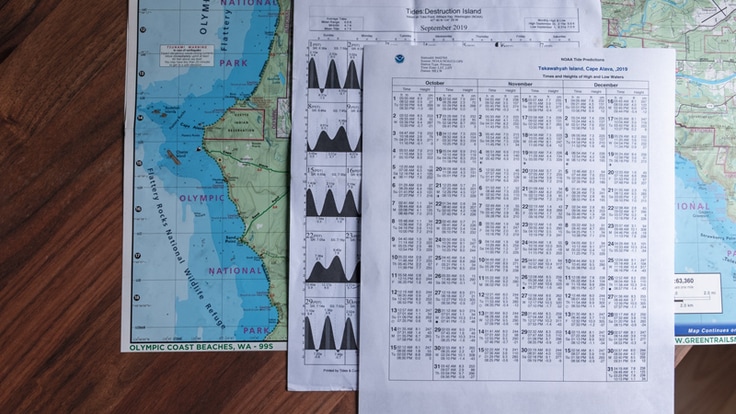Whether you're a coastal hiker, fisher or mariner, it's important to know how to read a tide table for safe navigation. Understanding tide heights and when high or low tides occur can help you decide the best time to explore tide pools, dig for clams, anchor your boat or beachcomb for shells. Knowing how to read tide tables can also help keep you safe. If you're backpacking on the coast, for example, you need to have a tide table (along with a topographic map) to know what time of day you can safely round a headland that can't be passed at certain tide levels.
What Are Tides and What Causes Them?
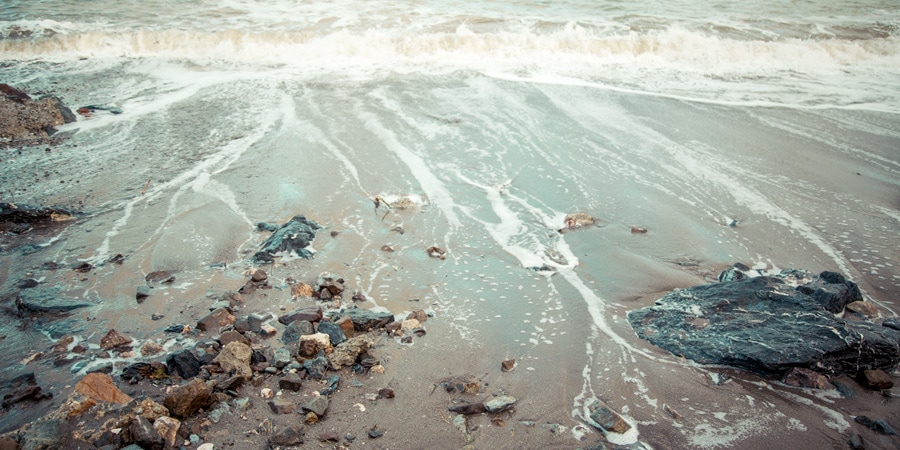
Tides are the daily rise and fall in surface water levels of bays, gulfs, inlets and oceans and vary depending on the day and location. Tides are big periodic waves that move through the ocean in response to the gravitational attraction of the moon and the sun, according to the National Oceanic and Atmospheric Administration (NOAA). Most coastal areas experience two high tides and two low tides every day and they may not be equal. (In some places, such as the Gulf Coast, you may only get one high and one low tide per day.) The height difference between high tide and low tide is called the tidal range. In some areas, the difference between high and low tides may not be so noticeable. In other areas, it can be quite stark.
What Is a Tide Table?
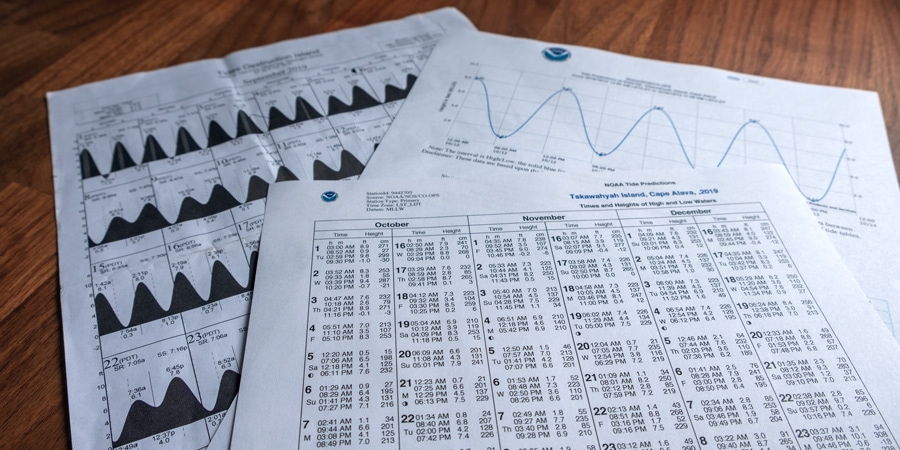
A tide table shows the daily predictions for the local time of low and high tides, as well as the height of those tides for a particular coastal area. The tide table is often shared in a tabular format.
NOAA's Center for Operational Oceanographic Products and Services (CO-OPS) makes tide predictions available for more than 3,000 locations around the U.S. The federal agency is the leading source of tide predictions, and its Tides and Currents website allows users to view and download tide information for up to two years, past and future.
(Note that tide tables are different from tide charts, which typically refer to a series of maps that show hourly water levels throughout a bay or estuary and are only available in a limited number of locations in the U.S.).
How to Read a Tide Table
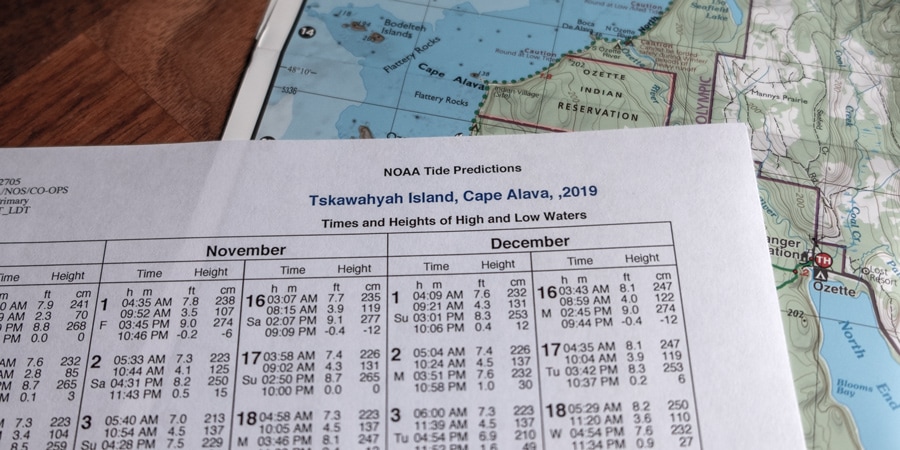
Step 1: Look Up Daily Tide Information for Your Location
There are different ways to get information about daily tides for your particular area or location.
- Get free tide information from NOAA's online tool, Tide Predictions, which provides past and future tide information for 3,000 locations. If you're using this web-based tool, choose the closest tide station from a list available in your state or use the map-based search function. Once you find the station nearest to your location, click on it to pull up the relevant information and print it out.
- Buy a tide table booklet for your specific area. These are often available at bait shops, hardware stores, marinas or sporting goods stores.
- Look for tide tables in local newspapers (which sometimes print that information along with weather reports) or ranger stations.
Download a tide app such as Tides Near Me or My Tide Times, among many others.
Step 2: Look Up the Dates You'll Be Out
Once you find the location of interest, you'll want to look up the tides for the dates you'll be hiking, fishing or beachcombing.
For example, let's say you wanted to do a backpacking trip along the coast of Washington state in mid-October and you need to know when high and low tides are.You may want to know whether you can hike or camp along the beach or whether you can pass a rocky point at certain times of the day.
The tide table information can be viewed in different formats, such as a graph or table. Below shows the tide information for two days: Oct. 12-13, 2019. (The example used is from NOAA, but other sources may provide similar information in different formatting or layout.)
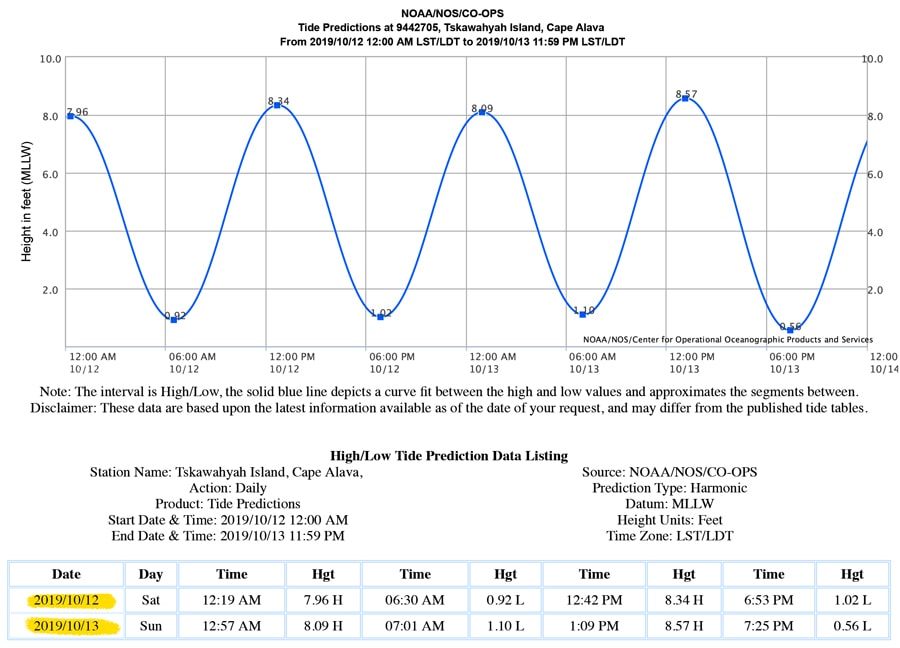
Step 3: Make a Note of the Times of High and Low Tides
Make a note of the times and heights of high tides and low tides, and the height difference in between.

In this example at Cape Alava, Washington, there are two high tides on Oct. 12: the first high tide at 12:19 a.m. and another that is even higher tide at 12:42 p.m. The first high tide of 7.96 feet means that the water level is 7.96 feet as measured above the average of the lowest low tides. (NOAA uses MLLW, or Mean Lower Low Water, which is the average height of the daily lowest tide observed over a 19-year period. Sometimes tide predictions are referenced to other levels, so it's good practice to note which one you're using). There are two low tides, one that is 0.92 feet at 6:30 a.m. and another of 1.02 feet at 6:53 p.m.
Viewing the information in graph form gives you a sense of the rise and fall of water.
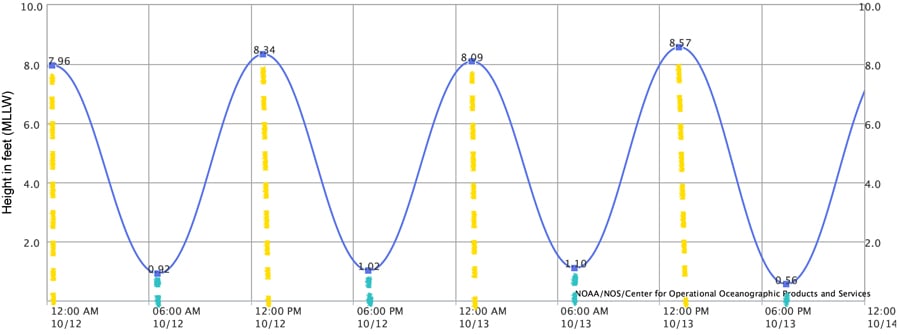
How to Use Tide Table Information
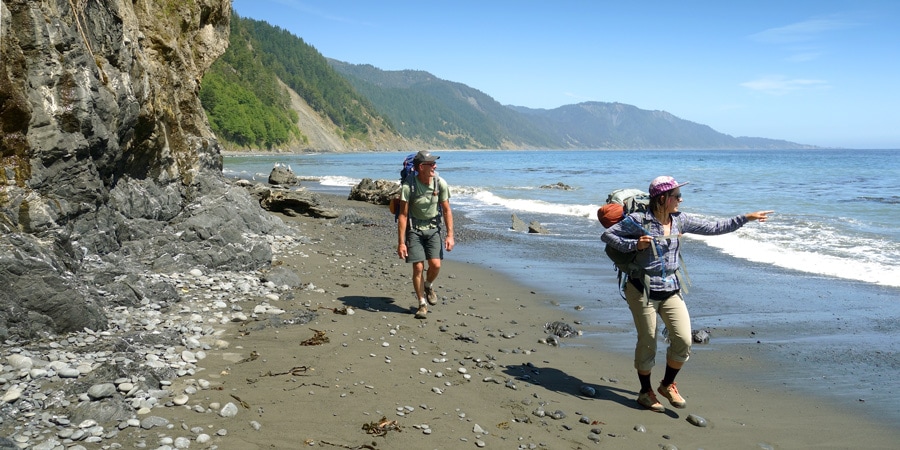
The tide table tells you the height and times of the low and high tides and when the tide is rising or falling. In our example above, you can see that from 6:53 p.m. on Oct. 12 to 12:57 a.m. on Oct. 13, the tide will rise about 7 feet vertically. So, if you are planning to camp on the beach somewhere near Cape Alava that night, you'll want to make sure you are well above the high tide line so you don't wake up with waves lapping at your tent door. (Note that a high tide of 7 feet only tells you that the tide will be 7 feet above the reference level of the MLLW; it doesn't tell you how far up the beach or the coastline that water will reach horizontally.) Still, when camping on the beach, you may be able to figure out the high tide water line by looking for features such as log jams, debris or "wet beach" on the coast, or check with a parks or coastal ranger before heading out.
Likewise, in this example, if you plan to round a headland on the beach on Oct. 12 and your topographic map indicates you need a low tide to pass around it, you'll need to pay attention to the fact that your low tide options are either early morning (6:30 a.m.) or evening (6:53 p.m.) and plan accordingly.
Additional Notes and Tips When Using Tide Tables
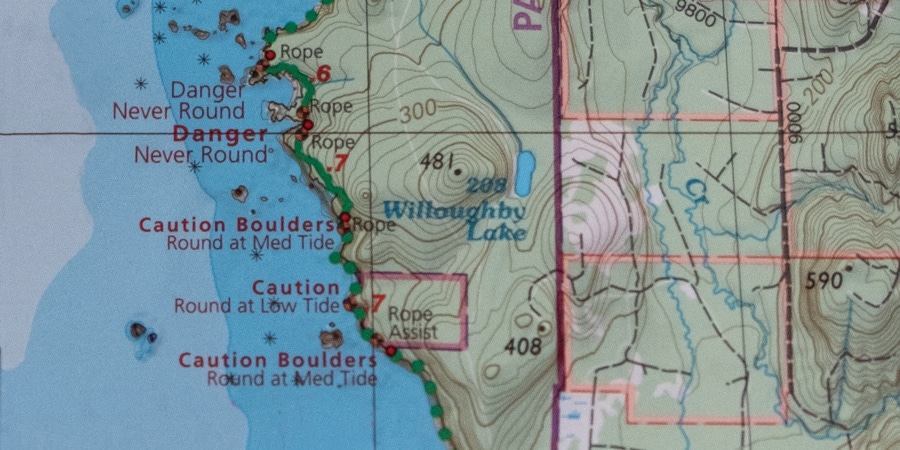
- A detailed topo map will note certain points on the coastline that may require low tide to pass or list tide levels necessary to round certain headlands.
- According to Olympic National Park, it's best to round headlands within one or two hours before low tide (as tide is receding), and not when a tide is coming in.
- Depending on the slope of your beach or coastline, the vertical rise in the tide of 7 feet could vary dramatically. If you're on a shallow slope, a rise in 7 feet will be very noticeable. If you're on a high rocky cliff, a rise in 7 feet likely won't make a big difference.
- Tide predictions are only astronomical predictions. The actual tides along a coastline can be influenced by other factors such as weather and wind patterns, an area's topography or river runoff. Tide predictions are very useful in locations where the water levels follow the tide, but there are some places where tide predictions won't necessarily be representative of what you're actually going to see on the water.
- Even if the tide heights aren't accurate, you can still learn a lot from a tide table, particularly the timing of the rise and fall of tides. Even though water levels may not match tide predictions, you still know that the oscillations (up and down) are cyclical.
- If you're going to be in an area for a while, you can also look at conditions during these tides and make a mental note of the changes during high and low tides. A tree's roots or rocks may be visible at low tide but covered with water at a higher tide.
- It's always good to check the water levels for a particular area. NOAA, the U.S. Geological Survey, state agencies and other entities provide this information.
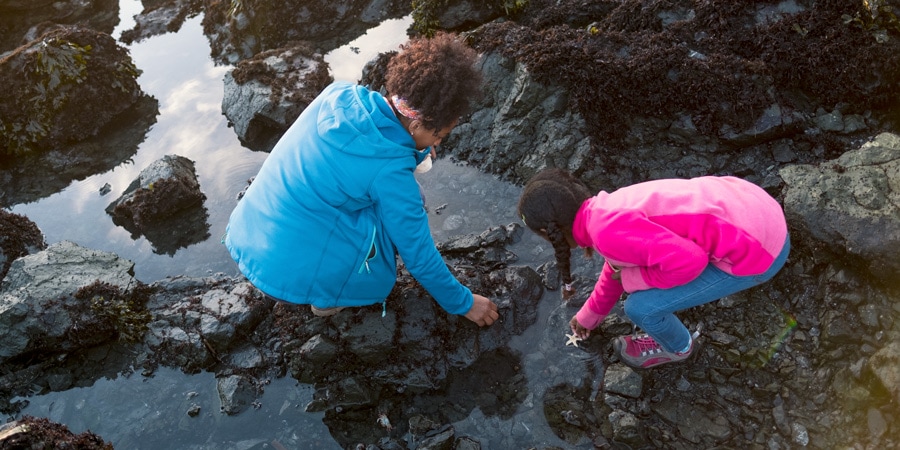
- People beachcombing for shells, sea glass, agate or other treasures may want to time their outings during the time between high and low tide when lower water levels reveal exposed beach. Those digging for clams will have the most luck in the lowest tides when water levels recede to reveal clam beds. (The state of Oregon, for example, says the most worthwhile clamming adventure happens at so-called "negative tides" or "minus tides," when tides are below the MLLW.)
